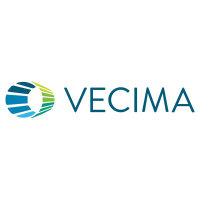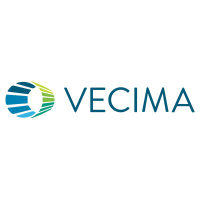
Vecima Networks Inc
TSX:VCM


| US |

|
Johnson & Johnson
NYSE:JNJ
|
Pharmaceuticals
|
| US |

|
Berkshire Hathaway Inc
NYSE:BRK.A
|
Financial Services
|
| US |

|
Bank of America Corp
NYSE:BAC
|
Banking
|
| US |

|
Mastercard Inc
NYSE:MA
|
Technology
|
| US |

|
UnitedHealth Group Inc
NYSE:UNH
|
Health Care
|
| US |

|
Exxon Mobil Corp
NYSE:XOM
|
Energy
|
| US |

|
Pfizer Inc
NYSE:PFE
|
Pharmaceuticals
|
| US |

|
Palantir Technologies Inc
NYSE:PLTR
|
Technology
|
| US |

|
Nike Inc
NYSE:NKE
|
Textiles, Apparel & Luxury Goods
|
| US |

|
Visa Inc
NYSE:V
|
Technology
|
| CN |

|
Alibaba Group Holding Ltd
NYSE:BABA
|
Retail
|
| US |

|
JPMorgan Chase & Co
NYSE:JPM
|
Banking
|
| US |

|
Coca-Cola Co
NYSE:KO
|
Beverages
|
| US |

|
Walmart Inc
NYSE:WMT
|
Retail
|
| US |

|
Verizon Communications Inc
NYSE:VZ
|
Telecommunication
|
| US |

|
Chevron Corp
NYSE:CVX
|
Energy
|
Utilize notes to systematically review your investment decisions. By reflecting on past outcomes, you can discern effective strategies and identify those that underperformed. This continuous feedback loop enables you to adapt and refine your approach, optimizing for future success.
Each note serves as a learning point, offering insights into your decision-making processes. Over time, you'll accumulate a personalized database of knowledge, enhancing your ability to make informed decisions quickly and effectively.
With a comprehensive record of your investment history at your fingertips, you can compare current opportunities against past experiences. This not only bolsters your confidence but also ensures that each decision is grounded in a well-documented rationale.
Do you really want to delete this note?
This action cannot be undone.

| 52 Week Range |
8.52
15.97
|
| Price Target |
|
We'll email you a reminder when the closing price reaches CAD.
Choose the stock you wish to monitor with a price alert.

|
Johnson & Johnson
NYSE:JNJ
|
US |

|
Berkshire Hathaway Inc
NYSE:BRK.A
|
US |

|
Bank of America Corp
NYSE:BAC
|
US |

|
Mastercard Inc
NYSE:MA
|
US |

|
UnitedHealth Group Inc
NYSE:UNH
|
US |

|
Exxon Mobil Corp
NYSE:XOM
|
US |

|
Pfizer Inc
NYSE:PFE
|
US |

|
Palantir Technologies Inc
NYSE:PLTR
|
US |

|
Nike Inc
NYSE:NKE
|
US |

|
Visa Inc
NYSE:V
|
US |

|
Alibaba Group Holding Ltd
NYSE:BABA
|
CN |

|
JPMorgan Chase & Co
NYSE:JPM
|
US |

|
Coca-Cola Co
NYSE:KO
|
US |

|
Walmart Inc
NYSE:WMT
|
US |

|
Verizon Communications Inc
NYSE:VZ
|
US |

|
Chevron Corp
NYSE:CVX
|
US |
This alert will be permanently deleted.
Vecima Networks Inc
Vecima Networks, Inc. focuses on developing integrated hardware and scalable software solutions for broadband access, content delivery, and telematics. The company is headquartered in Victoria, British Columbia and currently employs 497 full-time employees. The company went IPO on 2005-11-14. The firm's Video and Broadband Solutions (VBS) segment includes platforms that process data from the cable network and deliver Internet connectivity to homes over cable and fiber as well as adapt video services to formats suitable to be consumed on televisions in commercial properties. Its Content Delivery and Storage (CDS) segment includes solutions and software, under the MediaScaleX brand, for service providers and content owners that focus on ingesting, producing, storing, delivering and streaming video for live linear, Video on Demand (VOD), network Digital Video Recorder (nDVR) and time-shifted services over the Internet. Its Telematics segment provides fleet managers with information and analytics they require to manage their mobile and fixed assets under the Contigo and Nero Global Tracking brands.

Vecima Networks, Inc. focuses on developing integrated hardware and scalable software solutions for broadband access, content delivery, and telematics. The company is headquartered in Victoria, British Columbia and currently employs 497 full-time employees. The company went IPO on 2005-11-14. The firm's Video and Broadband Solutions (VBS) segment includes platforms that process data from the cable network and deliver Internet connectivity to homes over cable and fiber as well as adapt video services to formats suitable to be consumed on televisions in commercial properties. Its Content Delivery and Storage (CDS) segment includes solutions and software, under the MediaScaleX brand, for service providers and content owners that focus on ingesting, producing, storing, delivering and streaming video for live linear, Video on Demand (VOD), network Digital Video Recorder (nDVR) and time-shifted services over the Internet. Its Telematics segment provides fleet managers with information and analytics they require to manage their mobile and fixed assets under the Contigo and Nero Global Tracking brands.
This earnings call has not been analyzed yet.
If you’d like us to analyze this earnings call, click the "Request Earnings Call Analysis" button below.


































